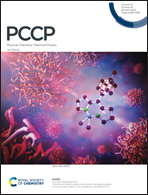Linking structure to performance of Li1.2Mn0.54Ni0.13Co0.13O2 (Li and Mn rich NMC) cathode materials synthesized by different methods†
Abstract
Li and Mn-rich Li1+xNiyCozMnwO2 (LMR-NMC, 0 < x < 0.2; w > 0.5) materials remain commercially relevant owing to their high specific capacity. Due to this stoichiometry, their synthesis forms always at least two phases: monoclinic Li2MnO3 and rhombohedral LiNiaCobMncO2 (a = b = c = 1) layered moieties. However, a complete understanding of their complex crystal structure has not yet been fully realized. The monoclinic phase may become electrochemically active only at high potentials (>4.6 V vs. Li). To complicate matters even more, it has been shown that the electrochemical performance of these materials, having formally the same stoichiometry, can vary with the chosen method of material synthesis. Identification of the chemical and/or structural reasons for these variations in performance is crucial to ensure the promotion of these important cathode materials towards a practical use. Yet most methods of analysis cannot distinguish the subtle, localized variations that account for such differences. Here, solid state 6,7Li NMR was found to be successful in identifying several distinctions between compounds with identical chemical formulae. Many distinctions can be made, and even suggested to account for some of the differences in the electrochemical behaviors noted for the differently prepared materials.



 Please wait while we load your content...
Please wait while we load your content...